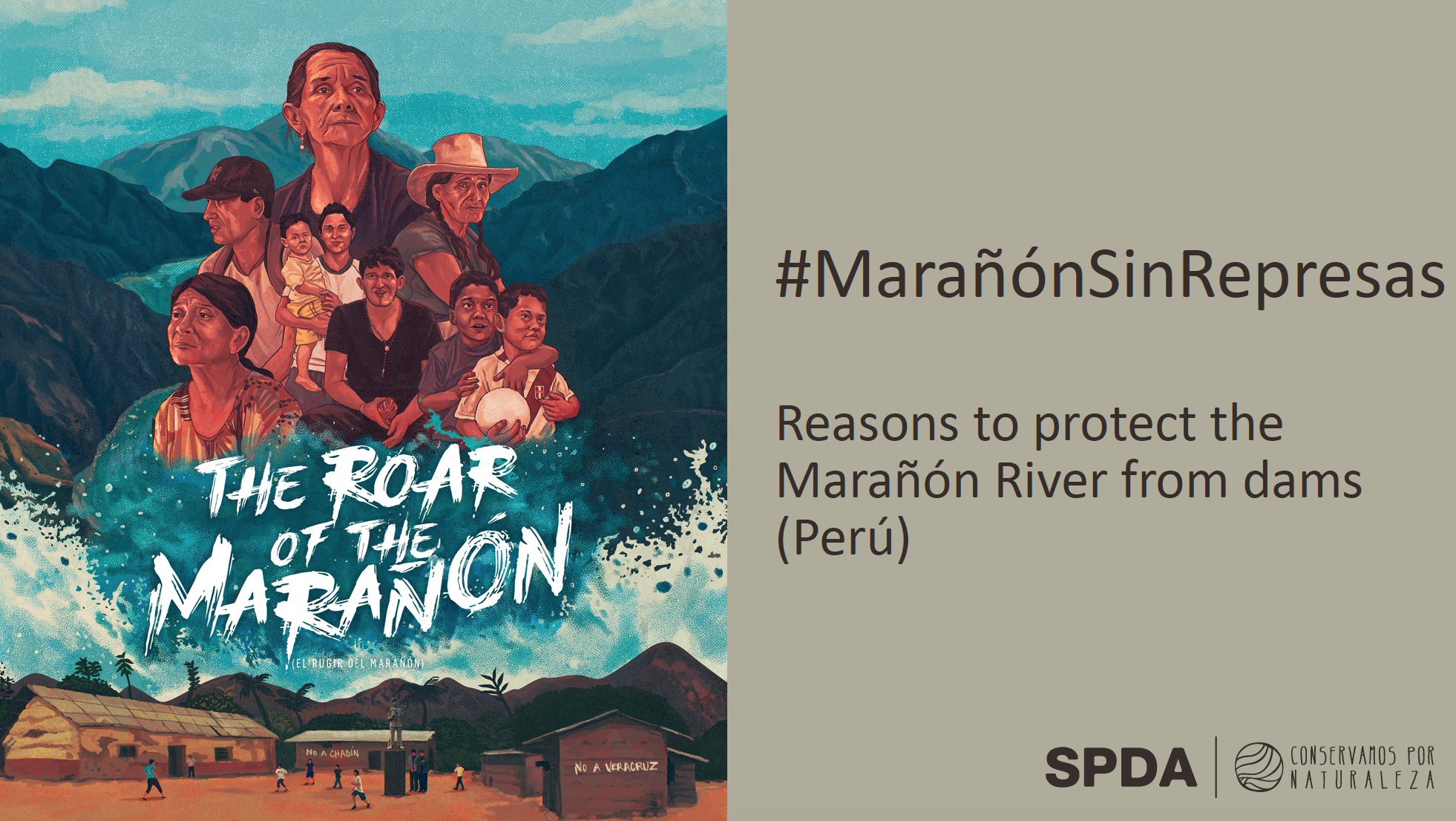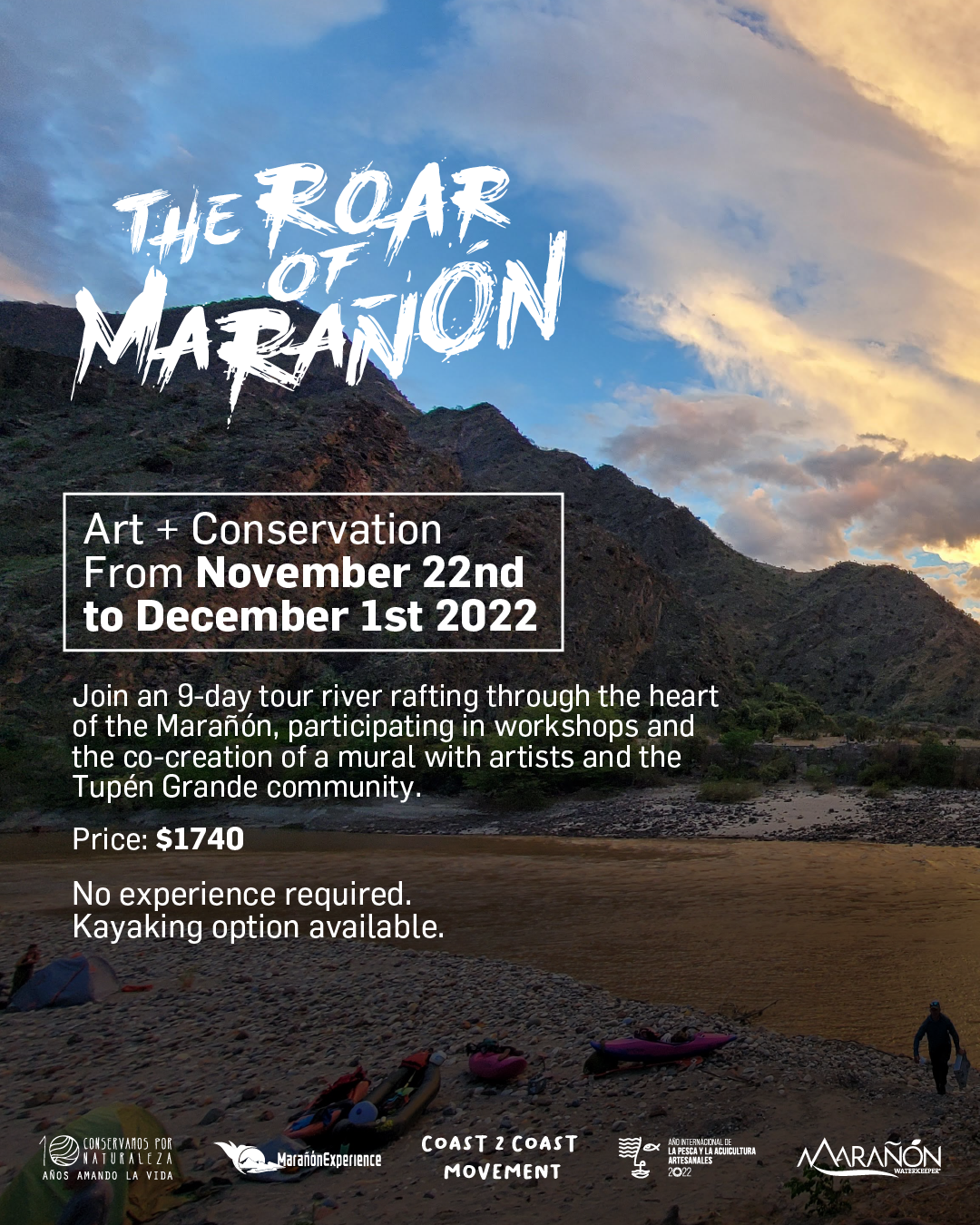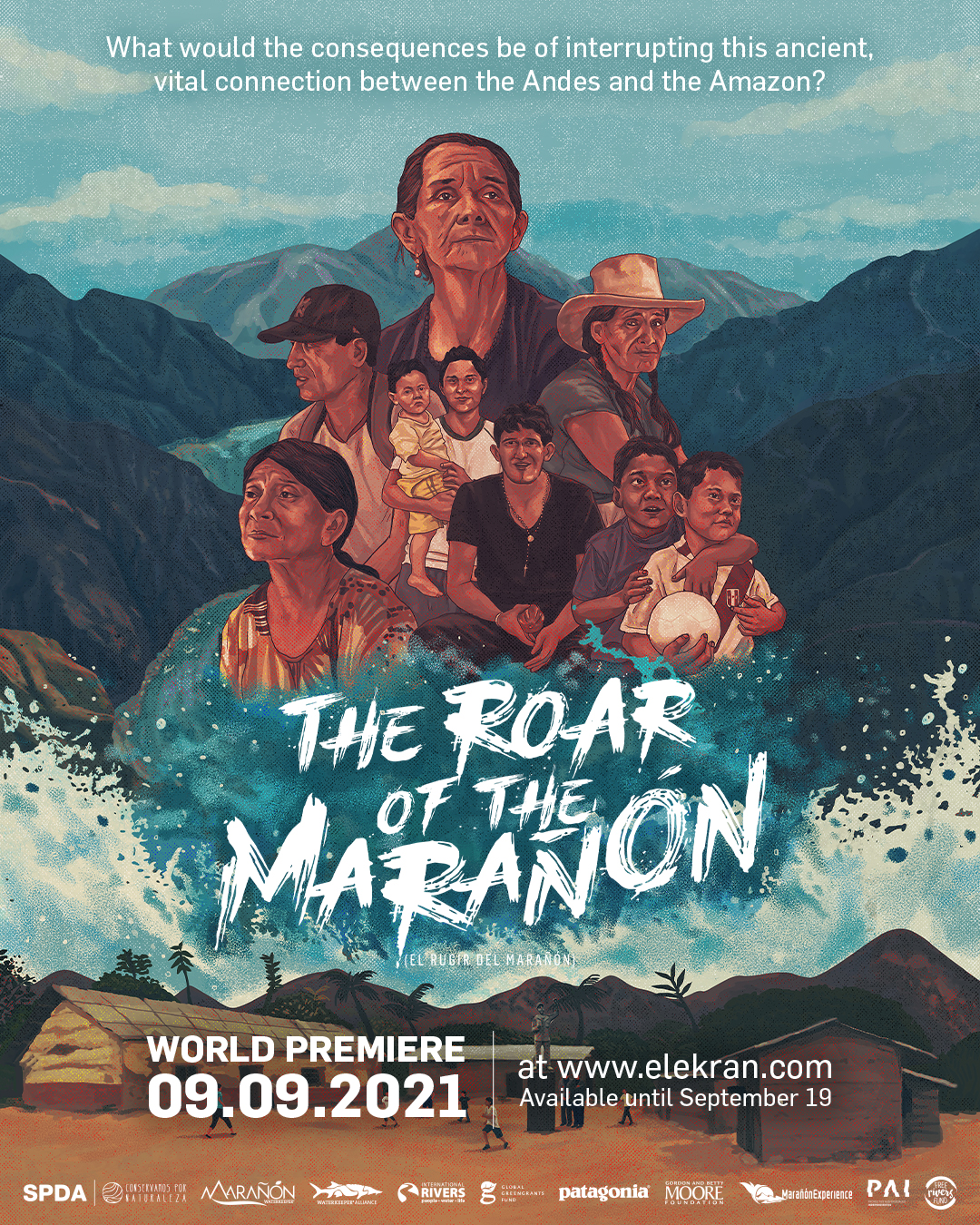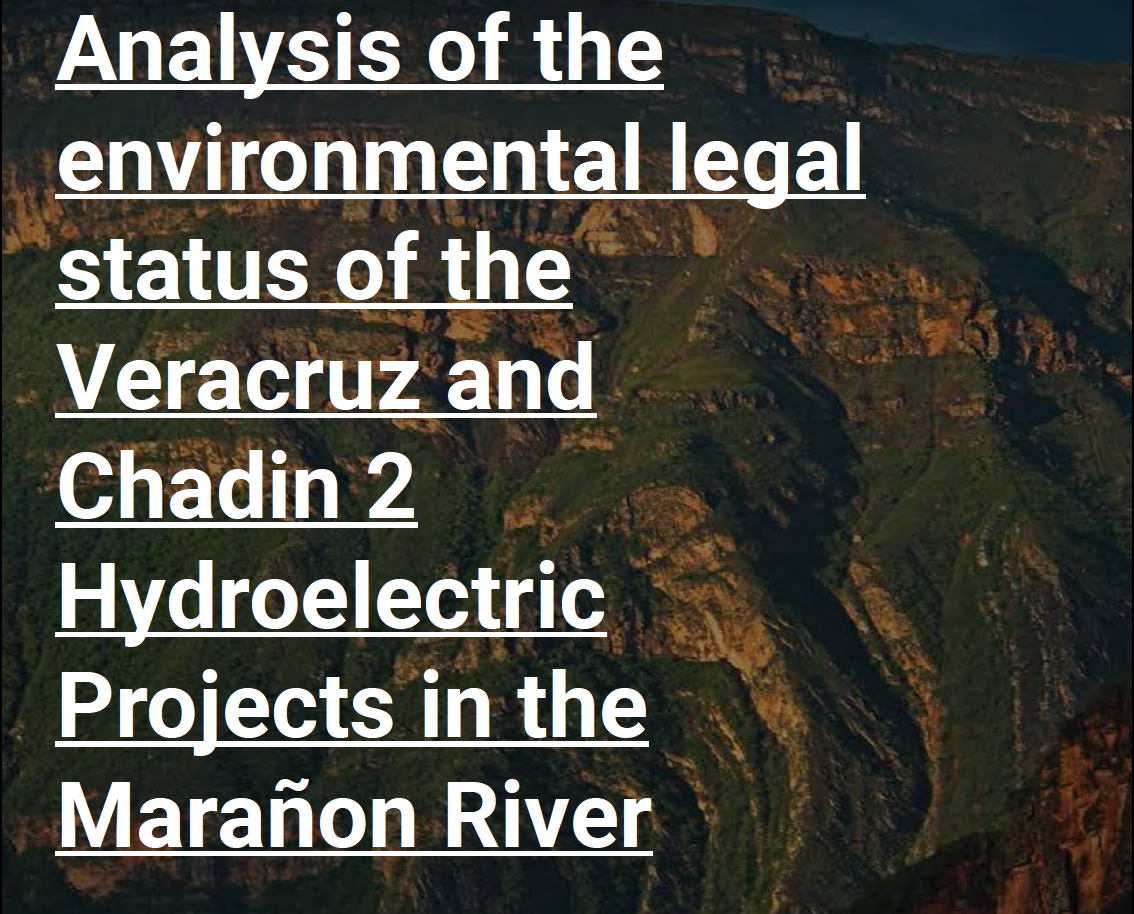Bruno Monteferri will do whatever it takes to put an end to the massive scheme to dam, and destroy, the magnificent Marañón River.
By Lisa W. Foderaro.
Originally published in Volume 15, Issue 2 of Waterkeeper Magazine; republished with permission from Waterkeeper Alliance.
Photos by ©Tui Anandi, courtesy of Culture Trip; Jessica Halter and Walter Wust / SPDA.
Floating on a raft through the so-called Grand Canyon of the Amazon, first-time visitors to the Marañón River in Peru tend to fall silent. The usual banter about epic rapids and paddling prowess fades amid the staggering scenery: rugged mountains rising thousands of feet from either bank; austere plant life clinging to rocky ledges; nighthawks swooping over water the color of café au lait.
The Marañón is the main source by volume of the legendary Amazon River. It flows more than a thousand miles in a broad arc north of Lima, starting at the eastern base of the Andes Mountains. It then courses through a tropical dry forest flecked with cacti and acacia trees, and on through a tropical rainforest where it merges with the Ucayali River to form the Amazon.
Yet the Marañón is so remote, and overshadowed by its mighty cousin, that few in Peru — let alone the outside world — have seen it.
“People know about the Amazon, but not many people know about the Marañón,” says Bruno Monteferri, the Marañón River Waterkeeper, on a recent whitewater-rafting trip. “And that has to change, especially because of all the threats.”

A study published in the scientific journal Nature in May found that nearly two-thirds of the planet’s longest rivers no longer flow freely, and that is mostly the result of dams and reservoirs. Of the remaining large, unimpeded rivers, those longer than 1,000 kilometers, or about 620 miles, about half are in South America. But in the Amazon basin alone, there are now plans for up to 500 dams, the study’s authors said. While hydroelectric dams may be renewable, they are not “green.” Among other things, free-flowing rivers provide a critical food source for hundreds of millions of people and nurture biodiversity.
Bruno, who is an environmental lawyer, is fighting up to 20 proposed dams on the Marañón that, according to the claims of some Peruvian government officials, are important to the country’s energy future. But if they were built, they would displace thousands of indigenous people, submerge forested lands, and impede the flow of sediment that nourishes ecosystems throughout the Amazon basin.
While many of the hydroelectric dam projects exist largely in theory, or as dots on a map, several are further along in the planning. Two in particular are located amid the river canyons that have recently attracted ecotourists who spend anywhere from a few days to a few weeks exploring the Marañón by raft.
In some ways, it seems that Bruno’s entire professional life has brought him to the forefront of the Marañón River battle. For the past 15 years, he has worked for the Peruvian Society for Environmental Law, one of the most influential environmental nonprofits in the country; in 2006 the group won the MacArthur Foundation’s Award for Creative and Effective Institutions. In addition to his law degree, Bruno has a master’s in conservation leadership from Cambridge University in England, where he met his wife, Christel Scheske, a conservation scientist.
For a while in his late teens, however, Bruno wavered about his future. At 16, he was the top-ranked tennis player in his age category in Peru and in the top 10 in South America. A life playing tennis on the international stage beckoned.
“But then I began traveling to the mountains with my friends and started to appreciate what Lima and the outskirts of Lima had to offer,” says Bruno, who is now 37. “In two hours you are already in the mountains, and in four hours you are in the higher part of the Amazon. I realized that I didn’t want to leave Peru yet.”

Such travel was novel in those days. As a child, Bruno recalls hearing explosions in the distance in Lima, as the feared rebel group known as the Shining Path made incursions into the city. As a result of the violence, travel was all but impossible.
“You didn’t have the option to explore the country, because you could get ambushed and kidnapped,” he says, adding that by the time he was in his teens, the government had quelled the rebel group, and travel had become much safer.
As Bruno was starting college in Lima, he also became passionate about surfing, an activity that deepened his love for the sea. Some of the best waves in the Western Hemisphere can be found along Peru’s coast. As a youngster, he had often bodysurfed in the Pacific Ocean with his family, and at 17 he started using a surfboard. A few years later, he was riding waves more than 15 feet tall, an experience that would later inspire one of his signature legal campaigns.

It was during law school that Bruno decided to devote himself to protecting natural landscapes, and began to work for the Peruvian Society for Environmental Law. After graduating, he took a full-time position with the society.
Today, he directs the society’s program Conservamos por Naturaleza (We Conserve for Nature). He also heads the organization’s marine governance initiative. Over the years, he has worked on numerous projects, from beach cleanups and reforestation campaigns to a recent ban on single-use plastics. He has partnered with indigenous communities to protect land, collaborated with video-game developers to introduce conservation themes in games, and worked with companies like Patagonia on environmental campaigns.
The society’s executive director, Pedro Solano, attributes Bruno’s effectiveness, in part, to his ability to connect with people.
“He’s empathetic,” says Solano, who has traveled the country with Bruno. “He listens to people and tries to understand their point of view. When he visits a remote place and talks to either a young boy or an old man, the next time Bruno sees them, they will come up and give him a big hug.”
And, yes, he has helped save the waves or “surf breaks,” whose shape and size can be altered by infrastructure like piers and oil rigs. In 2000, Peru was the first country in the world to pass a law preserving waves beloved by surfers, after one such swell was ruined by new construction. In recent years, Bruno has worked with the government to craft regulations in support of the law. So far, nearly three-dozen surf breaks have won legal protection. Last year, Bruno, who is a new father, somehow found time to direct a film, “A la Mar” (“To the Sea”), about the initiative.

But ensuring that the Marañón River remains free flowing might be his biggest challenge. Bruno was familiar with the area of the river in the jungle, near where it feeds into the Amazon River, but he had not seen the vast stretches that meander through mountainous dry forest. Then he met Ben Webb, an Australian whitewater guide who had fallen under the spell of the Marañón on a kayaking trip, and was determined to halt the dams. Ben runs rafting-tours on the river through Marañón Experience, a company he formed with Luigi Marmanillo Cateriano. The trips begin after the rainy season ends in May, and introduce both Peruvians and international tourists to the Marañón, which includes dozens of Class III and IV rapids (on a scale of one to six).
“Ben was kind of a hippie, with his backpack and long hair, and he came into our office and said, ‘So we have to save the Marañón,’ ” Bruno recalls, noting that the meeting took place before the corruption scandal had weakened Odebrecht. “And I said, ‘Ben, this is one of the most powerful companies in Latin America. It’s not likely we’ll win this battle.’”
That was in 2014. Two years later Marañón River Waterkeeper was born, under the auspices of the Peruvian Society for Environmental Law, with Bruno at the helm and Ben serving as international coordinator. Luigi Cateriano became national coordinator.
Last July, one of Ben and Luigi’s guided rafting trips included a German activist who is working to stop the construction of new dams around the world, and an American filmmaker preparing a documentary about Marañón River Waterkeeper for public television. After hours of rafting, the group pitched tents on a sandy beach, while Ben and Luigi grilled shrimp and served up “chilcanos,” cocktails made with Peruvian “Pisco” brandy, ginger ale and lime. Driftwood was gathered for a large campfire, and a brilliant moon illuminated the river.

“You come to the Marañón and your perspective changes,” says Bruno, his chiseled features and scruffy beard lit up by the fire.
Bruno and Ben supported the production of an earlier documentary about the Marañón’s role in the Amazon and the dams that could undermine it. Called “Confluir,” (“Come Together”), the film, released in early 2018, features a group of American adventurers who ran some of the river’s biggest rapids in the 1970s by kayak and canoe. It alternates between grainy footage of that expedition and current video shot during a monthlong rafting trip on the Marañón with an international group of research scientists and river enthusiasts.
Marañón River Waterkeeper has screened “Confluir” at a handful of film festivals and shown it to a dozen communities along the river. One such town is Lonya Grande, a scrappy outpost with rutted streets and wandering roosters where many residents work on local coffee farms. A few years ago, the Veracruz-dam developers had given a presentation there in which they had downplayed any environmental fallout and impressed residents with the promise of jobs.
Last summer, Ben took townspeople whitewater rafting on the river for free. For some, it was the first time they had actually been on the Marañón. Then, after the screening of “Confluir,” and stirring remarks by Bruno, members of the audience erupted in applause and vowed to protect the Marañón.

“Lonya Grande was a town that was in favor of the dam,” Bruno says, “but there’s no way they will say yes to the dam again.”
Bruno continues to explore legal options, and a grant from the Gordon and Betty Moore Foundation enabled Marañón River Waterkeeper to hire a full-time lawyer in August. In addition, the group is buying land to create private reserves and establishing conservation easements, as well as bringing attention to the petroglyphs and cave paintings that would be flooded, and that, Bruno insists, should be protected by law. Bruno is also making the case that the Peruvian government must consider the collective impact of all the dam proposals rather than weighing them individually.
“If you have five or six dams – or 20 dams – the environmental impact cannot be looked at in isolation,” Bruno explains. “We are asking the government to annul the concession contracts. It is critical that the fate of the Marañón be raised to the level of a national dialogue.”
“But,” he adds, “even if the government’s decision is that this river must be sacrificed in order to have energy, we will continue to fight for the Marañón.”
Lisa W. Foderaro was a staff reporter for The New York Times for more than 30 years and has also written for National Geographic, Audubon Magazine, and Adirondack Life.










Leave a Reply